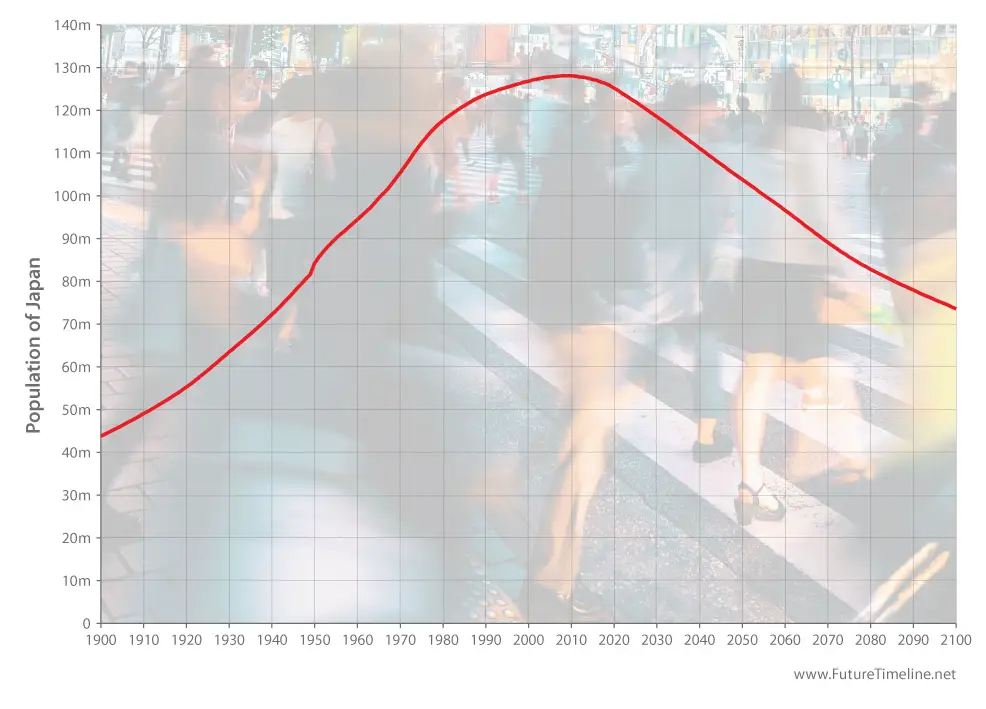
|
|
|
|
|
|
|
2056
Japan's population falls below 100 million
For most of the 20th century, Japan experienced high population growth. The post-war miracle saw its booming economy catapulted into second place behind only the USA by the 1980s. This period of rapid expansion ended with the bursting of the asset price bubble in 1991. A so-called "Lost Decade" followed and persisted into the 21st century. Japan experienced stagnation both financially and demographically.
By 2010, the country's population had peaked at 128 million and begun a gradual, inexorable decline. Several factors contributed to this long-term trend that would define Japan's place in the world for decades to come.
Firstly, Japan's fertility rate had been falling for many years, and during the early 21st century became one of the lowest in the world. The average number of children born per woman stood at just 1.34 by 2020, well below the replacement level of 2.1.
Japan also had one of the highest life expectancies in the world, and as a result, a rapidly aging population. The proportion of elderly people aged 65 and above continued to rise, while the number of young people of reproductive age decreased. In some isolated rural areas, this demographic change became so damaging that entire communities disappeared.
Economic and social factors played a role too. High education and employment opportunities for women, urbanisation, and changes in family values led to a decrease in marriage rates and a delay in childbirth. Additionally, Japan had historically followed restrictive immigration policies, which limited the number of foreigners entering the country to work and live.
These factors presented significant challenges for Japan's economy, social welfare system, and future prospects. By 2040, the country had reached an annual loss of nearly 750,000 people. By 2056, its total population has fallen below 100 million, a level last seen in the 1960s.*
Despite some attempts at policy changes – including relaxed immigration rules – this overall trend continues for the rest of the century, with Japan struggling to achieve a "managed decline" as it deals with the inevitability of its situation and a waning influence on the world stage. Among the solutions being introduced is greater use of robots to keep the wheels of society turning. Japan's love for and experience of robotics (perhaps more than any other country) and its already well-established industry is helpful in this regard, mitigating some of the impacts it would otherwise have felt.

« 2055 |
⇡ Back to top ⇡ |
2057 » |
If you enjoy our content, please consider sharing it:
References
1 Future projections are based on the UN's medium-fertility scenario.
See Population, including UN projections, 1873 to 2100, OurWorldInData:
https://ourworldindata.org/grapher/population-past-future?time=1873..2100&country=~JPN
Accessed 28th March 2023.
![[+]](https://www.futuretimeline.net/images/buttons/expand-symbol.gif)






